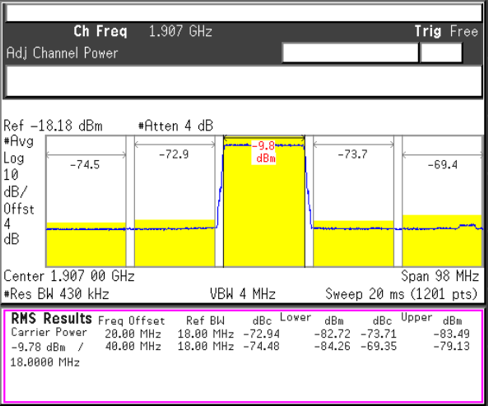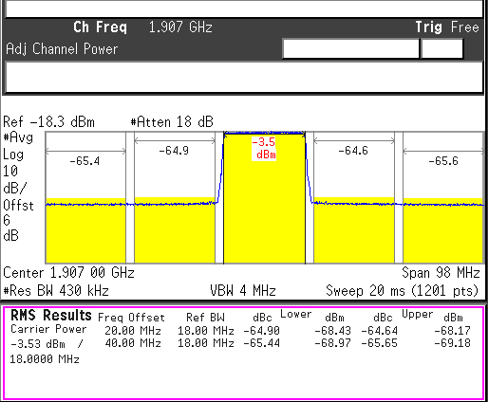SLAA871 January 2019 AFE7422 , AFE7444
5.2.2 Test Results
Figure 16 and Figure 17 show that the before and after LTE ACPR measurements of the repeater are approximately 73 dB and 65 dB, respectively. The ACPR degradation caused by the receiver is approximately 9 dBm. Notice that the reference level offset in Figure 17 increased by 2 dB to account for the loss due to the filter and the extra SMA cables. The RX and TX DSAs were set to 1 and 0, respectively, in order to yield an overall gain of 6 dB.
 Figure 16. Clean ACPR Measurement Directly From DAC38RF82
Figure 16. Clean ACPR Measurement Directly From DAC38RF82  Figure 17. Repeater ACPR Measurement From Output Shows 6-dB Gain of Waveform and 8-dB ACPR Degradation
Figure 17. Repeater ACPR Measurement From Output Shows 6-dB Gain of Waveform and 8-dB ACPR Degradation